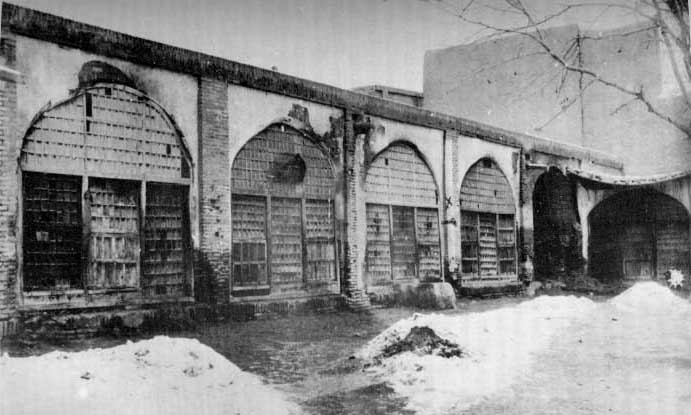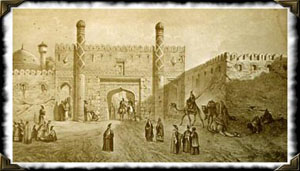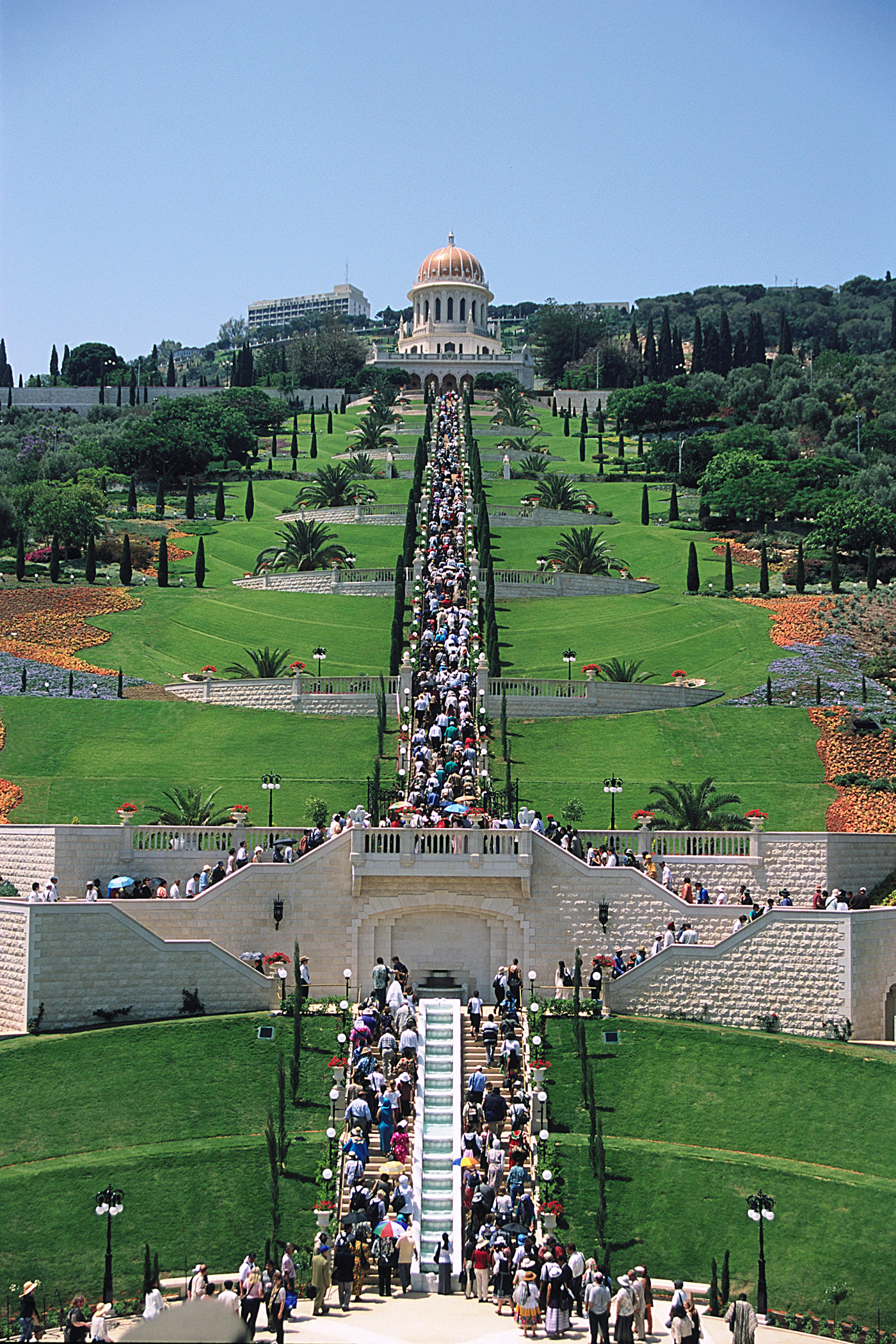An Astonishing Turn of Events
Even as I gather with my Baha'i community on July 9th to remember the astonishing turn of events surrounding the martyrdom of the Bab*, I am struck by how much of the story comes from choices – good and bad – made by ordinary people. Individuals who could never know that their choices would be woven into the fabric of collective remembrance and passed on to generations yet unborn. The setting was Tabriz, Persia, 1850.
There was the Grand Vizier of Persia, next in power to the Shah, who used that power to take the life of the Bab.
There was the governor of the province who refused to obey the Grand Vizier’s order of execution. The Bab had committed no crime, he pointed out, and was a descendant of the Prophet Muhammad, deserving of honor. To execute the Bab was “a task that only ignoble people would accept,” said the governor.
There was the brother of the Grand Vizier, who agreed to do his brother’s bidding, who had the Bab stripped of His green turban and sash – the emblems of His lineage to the Prophet – before He was marched through the streets of Tabriz to a cell in the city barracks.
There was the young man, a believer in the Bab, who broke through the watching crowd to throw himself on the ground at the Bab’s feet. “Send me not from Thee,” he begged. “Wherever Thou goest, suffer me to follow Thee.”
“Arise,” the Bab answered in a loving voice, “and rest assured that you will be with Me. Tomorrow you shall witness what God has decreed.” The young man, Anis, was arrested and taken to the same prison cell as the Bab.
Who was the Bab, that the Grand Vizier should be so intent on His death? From 1844 the Bab had clearly stated that He was a Messenger of God, that His sole Mission was to prepare the way for One even greater -- the Promised One of All Religions -- Who would soon appear.

In Persia the swell of enthusiasm in response to the Bab’s message alarmed many religious and political leaders, who fanned the flame of fear in others. The Bab was a merchant from Shiraz, they said, not a religious scholar. What could He know of religion and prophecy? Where persuasion failed, they used force. But the rising new Faith would not be silenced, nor its followers bullied into submission.
Determined to crush their spirit, the Grand Vizier ordered the Bab’s execution. On July 9, 1850, a firing squad of 750 soldiers prepared. Nearly ten thousand people crowded into Tabriz to watch. The Bab, with shackled wrists and an iron collar around His neck, had been led through the town’s streets and bazaars as onlookers shouted insults. If He was from God, let Him save Himself! Let Him perform a miracle! The Bab kept His silence.
Sam Khan, a Christian officer in charge of the firing squad, was moved by the Bab’s noble spirit and greatly disturbed to think that he might execute a holy man. But Sam Khan was a soldier, obliged to follow orders.
“I profess the Christian Faith and entertain no ill will against you,” said Sam Khan to the Bab. “If your Cause be the Cause of Truth, enable me to free myself from the obligation to shed your blood.”
“Follow your instructions,” the Bab replied, “and if your intention be sincere, the Almighty is surely able to relieve you from your perplexity.”
The chief attendant who came for the Bab cut short the Bab’s conversation with His scribe. “Not until I have said to him all those things that I wish to say can any earthly power silence Me,” warned the Bab, but the attendant paid no heed and took the Bab from His cell.

In the open square the Bab and His youthful disciple were tied together, Anis with his head resting on the Bab’s chest, the two suspended against a pillar. The 750 soldiers lined up in three rows. With a heavy heart Sam Khan gave the final order: ‘Fire!’ One after another, each row fired their weapons. The square filled with smoke, but when the air cleared, the watching crowd saw Anis standing unharmed, his ropes cut by the bullets. The Bab was nowhere to be seen. Onlookers were astonished. Confusion and fear rippled through the crowd. Was this the miracle for which they had asked?
The Bab was found back in His cell. “I have finished My conversation,” said the Bab calmly. “Now you may proceed to fulfill your intention.”
But Sam Khan ordered his regiment to leave. He had been spared from shedding the Bab’s blood and refused to have anything more to do with the Bab’s execution, even if it meant his own death for disobeying orders. The chief attendant, too, was deeply shaken. He left his job and would never again associate with the Bab’s enemies.
Another regiment volunteered to take the place of the first. This time when the soldiers fired their weapons the Bab and Anis were killed, their bodies rendered inseparable by the force of bullets from 750 rifles. Only their faces remained unmarked, the Bab with a look of calm and peace.
Not so the city. From that very hour a fierce wind whipped through Tabriz, thick with gritty dust that sifted into people’s clothes and eyes, and darkened the afternoon sun. The Bab had walked upon the earth for a mere thirty-one years. His mission, from that first Announcement in Shiraz, 1844, had spanned a brief six years. The cause of His death, wrote Baha’u’llah, were the people’s “vain imaginings . . . converted into bullets and aimed at Him Who is the Prince of the world.”
Despite the Grand Vizier’s plan, the Bab and His Faith were not forgotten. News traveled to Europe, where many were moved by His story. From Paris to London to St. Petersburg, poets and playwrights honored the noble Bab with their arts. Little more than a century later, on the slopes of Mount Carmel in the Holy Land, a shrine of pure white stone crowned with a dome of gold would entomb the Bab’s sacred remains. Today amid resplendent terraced gardens the shrine is visited by pilgrims who come from every place on the planet to give homage to the Bab, to remember the beauty of His character and the splendor of His revelation.
As for the Grand Vizier who ordered the Bab’s exec- ution, less than two years later he fell out of favor with the Shah, was dismissed from office and himself executed. Where is his gravesite, I wonder, and who visits it? Who weeps for his loss or kneels in gratitude for his gifts to the world? Who tells their children the stories of his life? I do not know, I do not know.
The Story of Baha’u’llah: Promised One of All Relgions, Part 1 - The Dawn